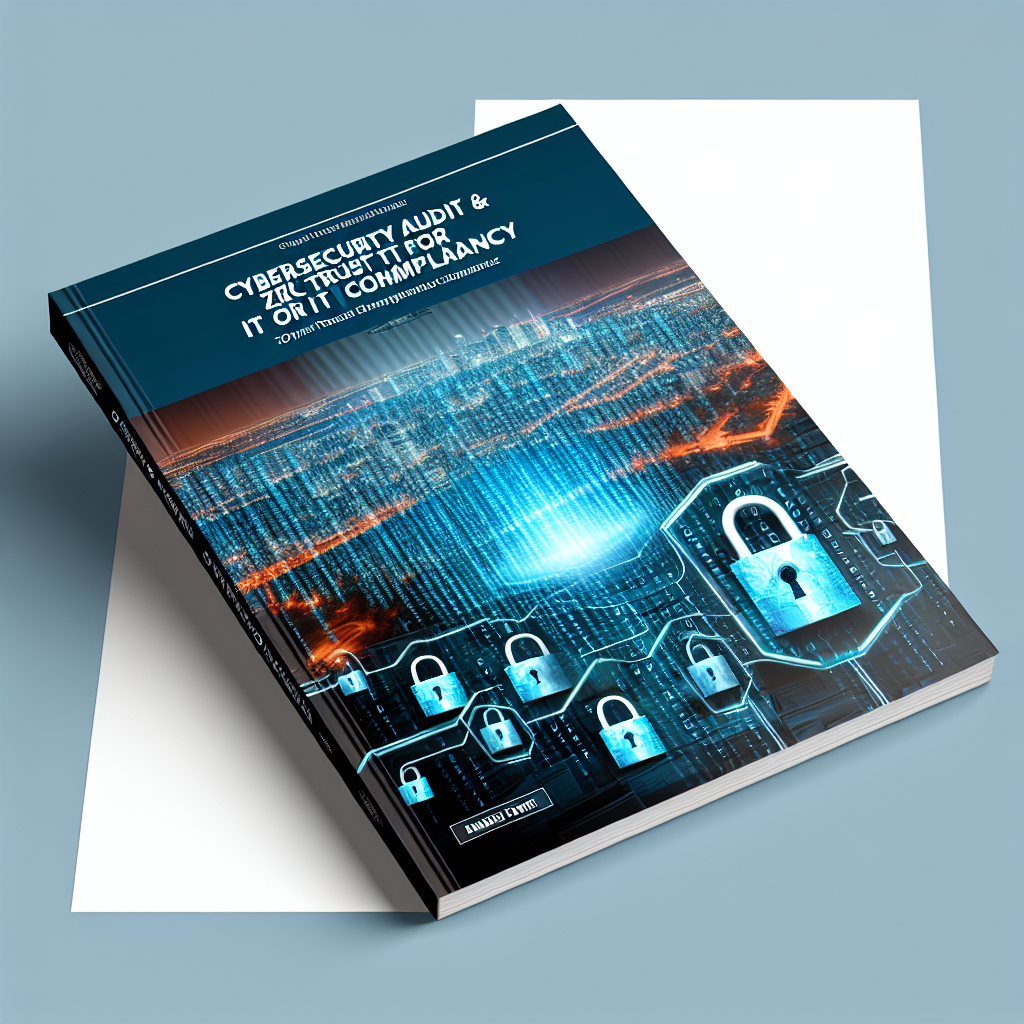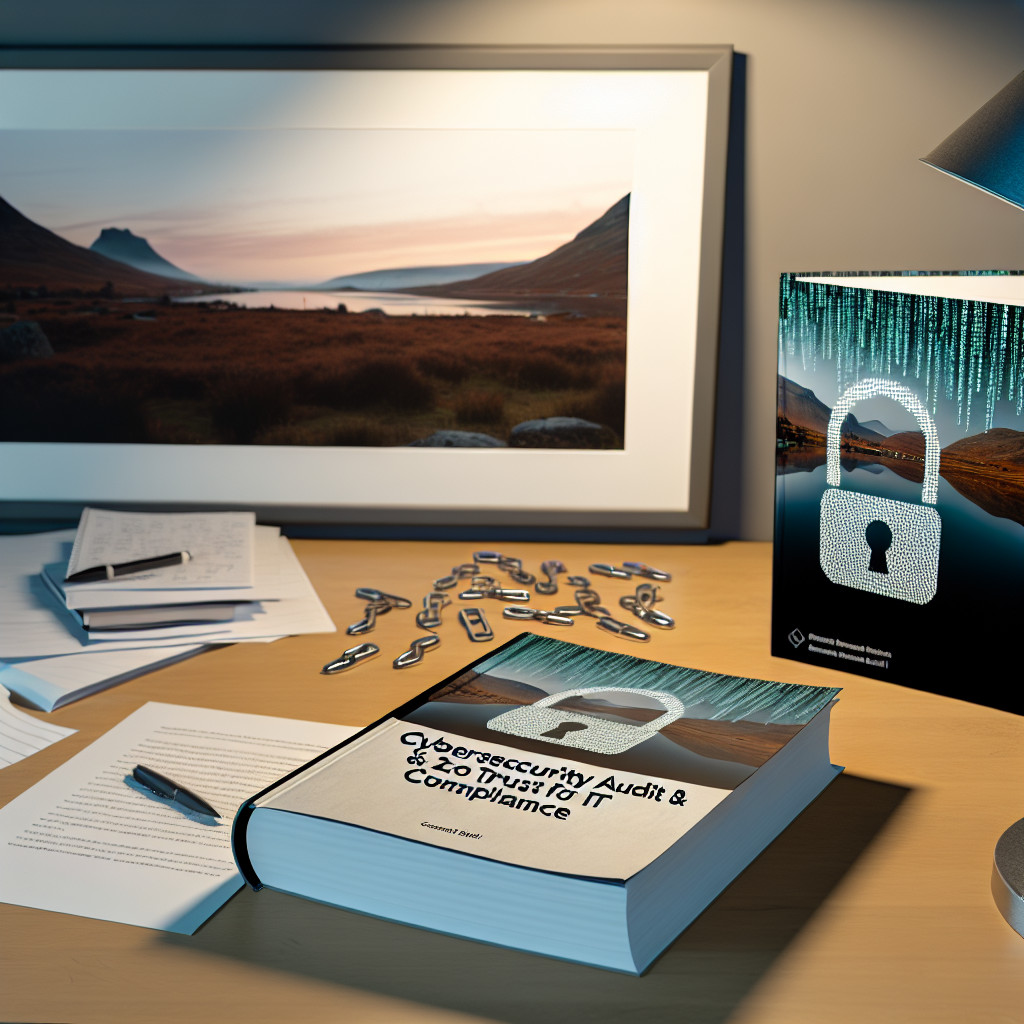Understanding Network Intrusion: Key Strategies for Effective Threat Detection
In the ever-evolving landscape of cybersecurity, understanding network intrusion and implementing effective threat detection strategies are paramount for safeguarding sensitive information. As cyber threats become increasingly sophisticated, organizations must adopt a proactive approach to protect their digital assets. A cybersecurity audit serves as a critical tool in this endeavor, providing a comprehensive assessment of an organization’s security posture and identifying potential vulnerabilities. By integrating modern IT strategies, businesses can enhance their ability to detect and respond to network intrusions, thereby minimizing the risk of data breaches and other cyber incidents.
To begin with, a cybersecurity audit involves a thorough examination of an organization’s IT infrastructure, policies, and procedures. This process helps identify weaknesses that could be exploited by malicious actors. By conducting regular audits, organizations can stay ahead of potential threats and ensure that their security measures are up to date. Moreover, audits provide valuable insights into the effectiveness of existing security controls, enabling organizations to make informed decisions about necessary improvements.
In conjunction with audits, modern IT strategies play a crucial role in enhancing threat detection capabilities. One such strategy is the implementation of advanced monitoring tools that provide real-time visibility into network activity. These tools utilize machine learning algorithms to analyze vast amounts of data, identifying patterns and anomalies that may indicate a potential intrusion. By leveraging artificial intelligence, organizations can detect threats more quickly and accurately, reducing the time it takes to respond to incidents.
Furthermore, adopting a layered security approach is essential for effective threat detection. This strategy involves implementing multiple security measures at different levels of the network, creating a robust defense against potential intrusions. For instance, firewalls, intrusion detection systems, and endpoint protection solutions work together to provide comprehensive coverage. By employing a multi-layered approach, organizations can ensure that even if one security measure is bypassed, others remain in place to thwart an attack.
Another key aspect of modern IT strategies is the emphasis on employee training and awareness. Human error remains one of the leading causes of security breaches, making it imperative for organizations to educate their staff about potential threats and best practices for maintaining security. Regular training sessions and simulated phishing exercises can help employees recognize suspicious activity and respond appropriately. By fostering a culture of security awareness, organizations can significantly reduce the likelihood of successful network intrusions.
Moreover, collaboration and information sharing among organizations are vital components of an effective cybersecurity strategy. By participating in industry forums and threat intelligence networks, businesses can stay informed about emerging threats and share insights with peers. This collective approach enables organizations to learn from each other’s experiences and develop more robust defenses against cyber threats.
In conclusion, understanding network intrusion and implementing effective threat detection strategies are critical for maintaining a strong cybersecurity posture. Through regular audits, the adoption of modern IT strategies, and a focus on employee training, organizations can enhance their ability to detect and respond to potential threats. By fostering collaboration and information sharing, businesses can stay ahead of cybercriminals and protect their valuable digital assets. As the cybersecurity landscape continues to evolve, a proactive and comprehensive approach to threat detection will remain essential for safeguarding sensitive information and ensuring the resilience of IT systems.
The Role of Cybersecurity Audits in Strengthening IT Compliance
In the rapidly evolving landscape of information technology, the importance of cybersecurity cannot be overstated. As organizations increasingly rely on digital infrastructures, the need to protect sensitive data and maintain robust security protocols has become paramount. One of the most effective ways to ensure that an organization’s cybersecurity measures are up to par is through regular cybersecurity audits. These audits play a crucial role in strengthening IT compliance, providing a comprehensive evaluation of an organization’s security posture and identifying areas for improvement.
Cybersecurity audits serve as a systematic examination of an organization’s information systems, policies, and procedures. They are designed to assess the effectiveness of existing security measures and ensure compliance with relevant regulations and standards. By conducting these audits, organizations can identify vulnerabilities and gaps in their security frameworks, allowing them to implement necessary changes to mitigate potential risks. This proactive approach not only enhances the overall security of the organization but also helps in maintaining compliance with industry standards and legal requirements.
Moreover, cybersecurity audits provide valuable insights into the organization’s risk management strategies. By evaluating the current security measures, auditors can determine whether the organization is adequately prepared to handle potential threats. This assessment is crucial in today’s digital age, where cyber threats are becoming increasingly sophisticated and frequent. Through audits, organizations can gain a better understanding of their risk exposure and develop strategies to address these risks effectively. This, in turn, strengthens the organization’s resilience against cyberattacks and ensures the protection of critical assets.
In addition to identifying vulnerabilities, cybersecurity audits also play a significant role in fostering a culture of security awareness within the organization. By involving various stakeholders in the audit process, organizations can promote a shared understanding of cybersecurity risks and the importance of compliance. This collaborative approach encourages employees to take an active role in maintaining security protocols and adhering to best practices. As a result, organizations can create a more security-conscious workforce, which is essential for maintaining a strong security posture.
Furthermore, cybersecurity audits are instrumental in ensuring that organizations remain compliant with ever-evolving regulatory requirements. With the introduction of stringent data protection laws such as the General Data Protection Regulation (GDPR) and the California Consumer Privacy Act (CCPA), organizations must demonstrate their commitment to safeguarding personal data. Regular audits help organizations stay abreast of these regulations and ensure that their security measures align with legal obligations. This not only helps in avoiding potential fines and penalties but also enhances the organization’s reputation as a trustworthy entity.
In conclusion, cybersecurity audits are a vital component of modern IT strategies, playing a pivotal role in strengthening IT compliance. By providing a thorough evaluation of an organization’s security measures, these audits help identify vulnerabilities, enhance risk management strategies, and promote a culture of security awareness. Moreover, they ensure that organizations remain compliant with regulatory requirements, thereby safeguarding sensitive data and maintaining trust with stakeholders. As cyber threats continue to evolve, the importance of regular cybersecurity audits will only increase, making them an indispensable tool for organizations striving to protect their digital assets and maintain a robust security posture.
Implementing Zero Trust: A Modern IT Strategy for Enhanced Endpoint Protection
In the rapidly evolving landscape of cybersecurity, organizations are increasingly recognizing the importance of robust strategies to protect their digital assets. One such strategy that has gained significant traction is the implementation of a Zero Trust architecture. This modern IT strategy is particularly effective in enhancing endpoint protection, a critical component of any comprehensive cybersecurity framework. As cyber threats become more sophisticated, traditional security models that rely on perimeter defenses are proving inadequate. Zero Trust, on the other hand, operates on the principle that threats can originate from both outside and inside the network, thus requiring verification of every user and device attempting to access resources.
The core tenet of Zero Trust is “never trust, always verify.” This approach necessitates continuous authentication and authorization of users and devices, regardless of their location within or outside the network perimeter. By doing so, organizations can significantly reduce the risk of unauthorized access and data breaches. Implementing Zero Trust involves several key components, including identity and access management (IAM), micro-segmentation, and real-time monitoring. These elements work in tandem to create a robust security posture that is adaptive to the dynamic nature of modern IT environments.
Identity and access management is a foundational aspect of Zero Trust, ensuring that only authenticated users with the appropriate permissions can access specific resources. This is achieved through multi-factor authentication (MFA) and strict access controls, which help to mitigate the risk of credential theft and misuse. Furthermore, IAM solutions provide detailed visibility into user activities, enabling organizations to detect and respond to suspicious behavior promptly.
Micro-segmentation is another critical element of Zero Trust, involving the division of the network into smaller, isolated segments. This limits the lateral movement of threats within the network, thereby containing potential breaches and minimizing their impact. By implementing micro-segmentation, organizations can enforce granular security policies tailored to each segment, ensuring that even if one part of the network is compromised, the rest remains secure.
Real-time monitoring and analytics play a pivotal role in the Zero Trust model, providing continuous oversight of network activities. Advanced threat detection tools leverage machine learning and artificial intelligence to identify anomalies and potential threats in real-time. This proactive approach allows organizations to respond swiftly to incidents, reducing the time attackers have to exploit vulnerabilities.
Transitioning to a Zero Trust architecture requires a strategic approach, as it involves significant changes to existing IT infrastructure and processes. Organizations must conduct thorough cybersecurity audits to assess their current security posture and identify areas for improvement. These audits provide valuable insights into potential vulnerabilities and help in prioritizing security investments. Additionally, employee training and awareness programs are essential to ensure that all users understand the principles of Zero Trust and adhere to security best practices.
In conclusion, as cyber threats continue to evolve, adopting a Zero Trust architecture is a prudent strategy for enhancing endpoint protection. By focusing on continuous verification, micro-segmentation, and real-time monitoring, organizations can create a resilient security framework that effectively safeguards their digital assets. While the transition to Zero Trust may require significant effort and resources, the long-term benefits in terms of reduced risk and improved security posture make it a worthwhile investment for any organization committed to protecting its data and systems.
Best Practices for Firewall Setup in a Comprehensive Cybersecurity Audit
In the ever-evolving landscape of cybersecurity, the importance of a comprehensive cybersecurity audit cannot be overstated. As organizations increasingly rely on digital infrastructure, the need to protect sensitive data and maintain robust security protocols becomes paramount. One of the critical components of a cybersecurity audit is the evaluation and setup of firewalls, which serve as the first line of defense against unauthorized access and cyber threats. To ensure optimal protection, it is essential to adhere to best practices for firewall setup, integrating them seamlessly into modern IT strategies.
To begin with, understanding the role of firewalls in a cybersecurity framework is crucial. Firewalls act as a barrier between an organization’s internal network and external threats, filtering incoming and outgoing traffic based on predetermined security rules. Therefore, during a cybersecurity audit, it is vital to assess the current firewall configuration and identify any potential vulnerabilities. This process involves reviewing the firewall’s rule set, ensuring that it aligns with the organization’s security policies and objectives. By doing so, organizations can effectively mitigate risks and enhance their overall security posture.
Moreover, a key aspect of firewall setup is the principle of least privilege. This principle dictates that only the minimum necessary access should be granted to users and systems, thereby reducing the potential attack surface. Implementing this principle involves configuring firewall rules to allow only essential traffic while blocking all other non-essential communications. Consequently, this approach minimizes the likelihood of unauthorized access and helps prevent data breaches. Additionally, regularly updating and reviewing these rules is imperative to adapt to the dynamic nature of cyber threats.
Transitioning to another critical practice, it is essential to employ network segmentation in conjunction with firewalls. Network segmentation involves dividing a network into smaller, isolated segments, each protected by its own firewall. This strategy limits the lateral movement of potential intruders within the network, thereby containing any breaches that may occur. By segmenting the network, organizations can ensure that even if one segment is compromised, the rest of the network remains secure. This layered security approach is a fundamental component of modern IT strategies, providing an additional safeguard against sophisticated cyber attacks.
Furthermore, the integration of advanced technologies such as intrusion detection and prevention systems (IDPS) with firewalls can significantly enhance an organization’s security capabilities. IDPS monitor network traffic for suspicious activities and can automatically block or alert administrators to potential threats. By incorporating these systems into the firewall setup, organizations can proactively identify and respond to emerging threats, thereby strengthening their cybersecurity defenses.
In addition to these technical measures, it is equally important to conduct regular training and awareness programs for employees. Human error remains one of the leading causes of security breaches, and educating staff on best practices for cybersecurity can significantly reduce this risk. Training should cover topics such as recognizing phishing attempts, understanding the importance of strong passwords, and adhering to security protocols. By fostering a culture of security awareness, organizations can empower their employees to become an integral part of the cybersecurity strategy.
In conclusion, the setup and management of firewalls are critical components of a comprehensive cybersecurity audit. By adhering to best practices such as implementing the principle of least privilege, employing network segmentation, integrating advanced technologies, and conducting regular training, organizations can effectively safeguard their digital assets. As cyber threats continue to evolve, staying vigilant and proactive in firewall management will remain a cornerstone of modern IT strategies, ensuring the protection of sensitive information and the integrity of organizational networks.
Integrating Threat Detection with IT Compliance: A Holistic Approach to Cybersecurity
In the rapidly evolving landscape of digital technology, organizations are increasingly recognizing the importance of integrating threat detection with IT compliance to create a robust cybersecurity framework. This holistic approach not only fortifies an organization’s defenses against cyber threats but also ensures adherence to regulatory requirements, thereby safeguarding both data integrity and corporate reputation. As cyber threats become more sophisticated, the need for a comprehensive strategy that combines proactive threat detection with stringent compliance measures has never been more critical.
To begin with, threat detection is a crucial component of any cybersecurity strategy. It involves the continuous monitoring of networks and systems to identify potential security breaches or anomalies that could indicate a cyber attack. Advanced threat detection systems leverage artificial intelligence and machine learning to analyze vast amounts of data in real-time, enabling organizations to detect and respond to threats swiftly. However, while threat detection is essential, it is not sufficient on its own. Without a framework that ensures compliance with industry standards and regulations, organizations may still find themselves vulnerable to legal and financial repercussions.
Integrating IT compliance into the cybersecurity strategy addresses this gap by ensuring that all security measures align with established standards and legal requirements. Compliance frameworks such as the General Data Protection Regulation (GDPR), the Health Insurance Portability and Accountability Act (HIPAA), and the Payment Card Industry Data Security Standard (PCI DSS) provide guidelines that organizations must follow to protect sensitive information. By adhering to these regulations, organizations not only protect themselves from potential fines and penalties but also build trust with their customers and stakeholders.
The integration of threat detection and IT compliance requires a coordinated effort across various departments within an organization. It involves the collaboration of IT security teams, compliance officers, and executive leadership to develop and implement policies that address both security and compliance objectives. This collaboration ensures that security measures are not only effective in detecting and mitigating threats but also compliant with relevant regulations. Moreover, it fosters a culture of security awareness and accountability throughout the organization, which is essential for maintaining a strong cybersecurity posture.
Furthermore, the use of automated tools and technologies can significantly enhance the integration of threat detection and IT compliance. Automation streamlines the process of monitoring and reporting, reducing the burden on IT staff and minimizing the risk of human error. Automated systems can continuously assess compliance status, generate reports, and alert relevant personnel to any deviations from compliance standards. This real-time visibility into both security and compliance metrics enables organizations to make informed decisions and take corrective actions promptly.
In conclusion, the integration of threat detection with IT compliance represents a holistic approach to cybersecurity that is essential in today’s digital age. By combining proactive threat detection with rigorous compliance measures, organizations can protect themselves against cyber threats while ensuring adherence to regulatory requirements. This integrated strategy not only enhances security but also builds trust with customers and stakeholders, ultimately contributing to the organization’s long-term success. As cyber threats continue to evolve, organizations must remain vigilant and adaptable, continuously refining their cybersecurity strategies to address emerging challenges and maintain a secure and compliant digital environment.
Enhance your organization’s security posture with our expert insights on cybersecurity audits and modern IT strategies. Discover more by visiting our website.











